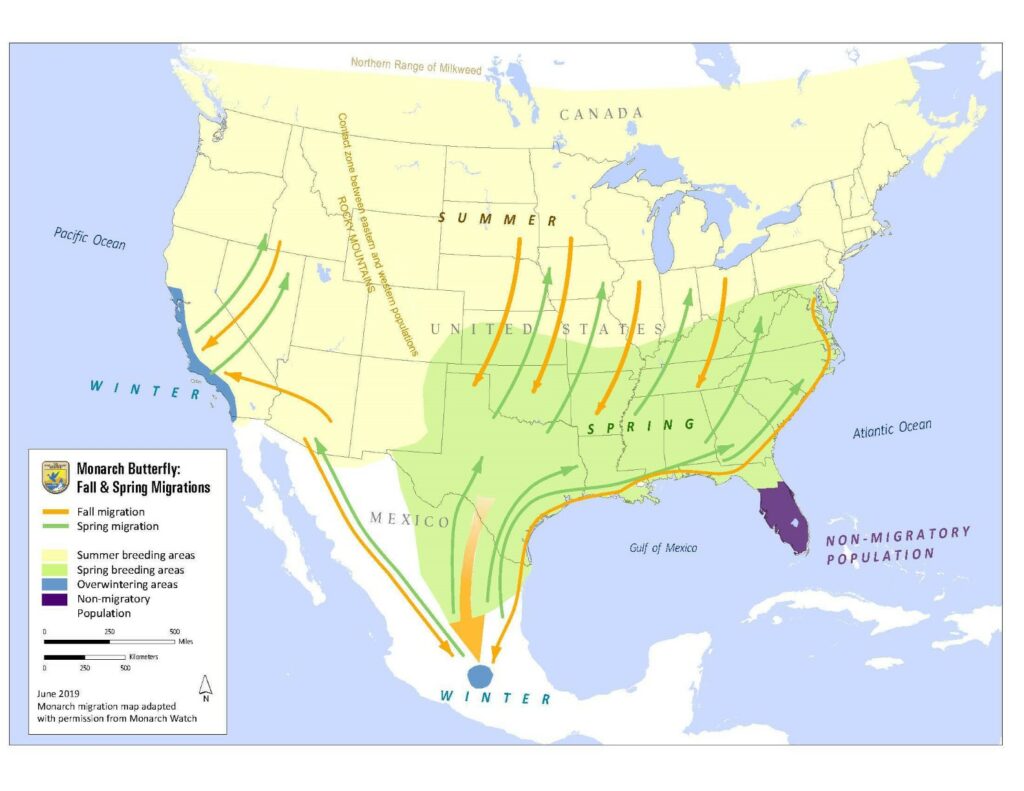Doug Farrell/Thousands of Monarch butterflies rest in a pine tree at Longport Point.
By NANETTE LoBIONDO GALLOWAY
LONGPORT On their 2,500-mile journey to overwinter in central Mexico, thousands of Monarch butterflies have selected the southernmost area in Longport Point as a resting place while they wait for ideal flying conditions.
On Wednesday, Oct. 20, Longport resident and children's book author Doug Farrell held up his smartphone to record thousands of Monarchs nesting in a row of pine trees along the property line of a bayfront home.
It was in 2017 during the Absecon Island dune construction project that Farrell advocated to protect Longport's existing dune located between 32nd and 36th avenues, which has attracted migrating butterflies for years. The dune is covered with mature goldenrod plants that supply nourishment for the Monarchs during their September through November migration.
It was beautiful to watch, Farrell said. I sit on my porch and go to the beach everyday and didn't see too many of them this year, so I was in shock when on my 8 a.m. morning walk to the Point I looked up and saw masses of them just sitting in that tree.
Later in the afternoon, Farrell went back to the tree and the butterflies were fluttering about in the warm sun.
I was overwhelmed with their beauty, he said.
As others walked by or rode their bicycles in the early evening, some spectators stopped to see the mass of butterflies on the tree and they were just as amazed as Farrell, although several did not know anything about the migration.
People just don't know we live on the transit highway of these beautiful butterflies, Farrell said.
 Monarch Watch Monarch butterfly migration map.
Monarch Watch Monarch butterfly migration map.
The Monarch migration is one of the world's most enjoyable biological phenomena. The butterflies travel as much as 100 miles a day over a two-month period to get to protected forests in Mexico. What's most amazing is that because the normal lifespan of a Monarch butterfly is between two to six weeks, the migrating generation can live long enough to complete the journey, and its future generations are the ones that mysteriously make the return trip to their roosting area each year.
https://youtu.be/5DqbvEQC0TQ
Monarchs are active during the daylight hours and rest in cool areas in the evening hours. On Wednesday, they were massed on the shady side of the pine trees, while the side facing the warm sunset was bare. Monarchs don't fly when temperatures drop below 55 degrees, and they will sometimes wait for ideal flying conditions.
The Monarch butterfly has decreased to its lowest count in recent years and is in jeopardy due to the loss of plants that serve as their food source, GMOs that are designed to resist pests, broad-spectrum glyphosate-based herbicides, extreme weather events, such as Hurricane Sandy, droughts and forest logging.
The New Jersey Department of Environmental Protection has published a comprehensive guide on how to protect the Monarchs, including planting milkweed, goldenrod and other native plants that serve as food sources for the orange, black and white visitors.
Farrell said that he would like to see the borough conduct an educational program next year at the Longport Public Library during the migration period. In the meantime, New Jersey residents are being encouraged to plant more common milkweed, which is a host plant where the Monarchs lay their eggs.
Download the NJ Monarch Butterfly Conservation Guide here https://www.nj.gov/dep/docs/monarch-guide.pdf
Copyright Mediawize, LLC 2021